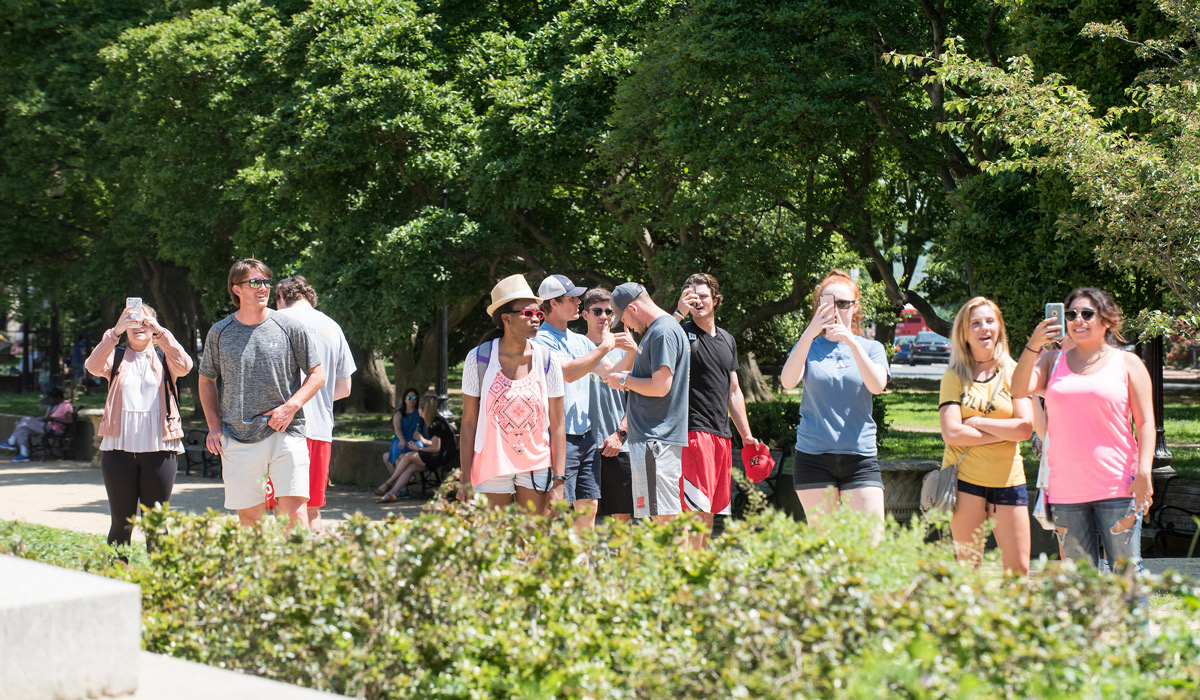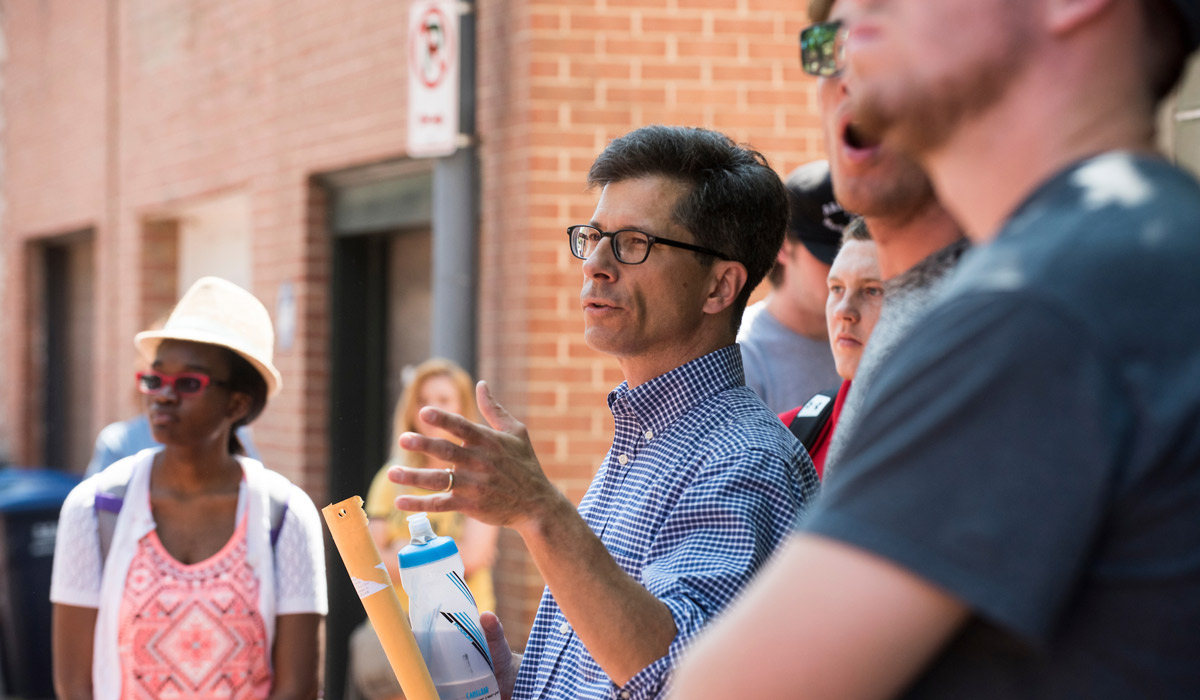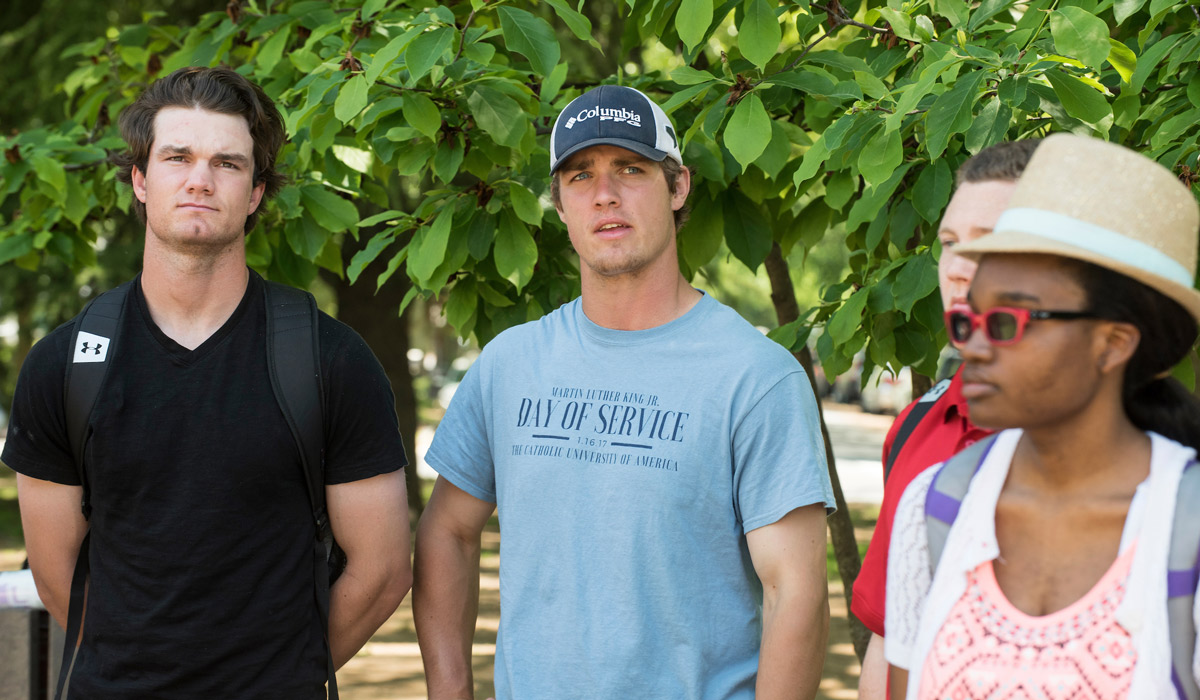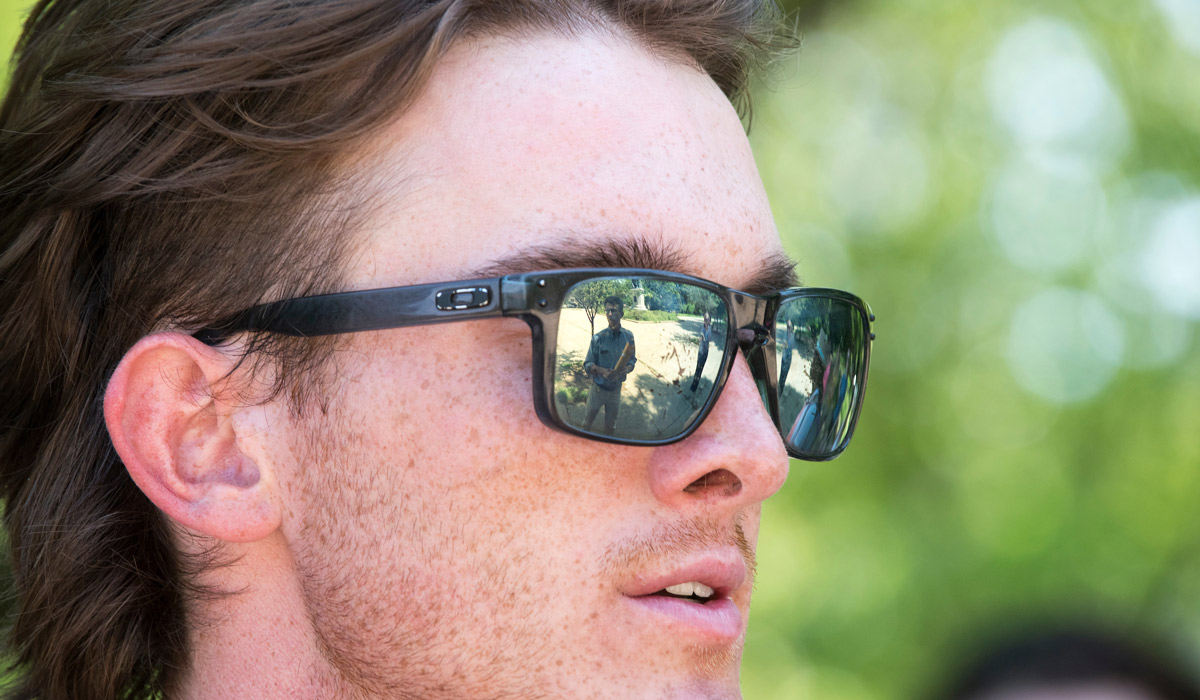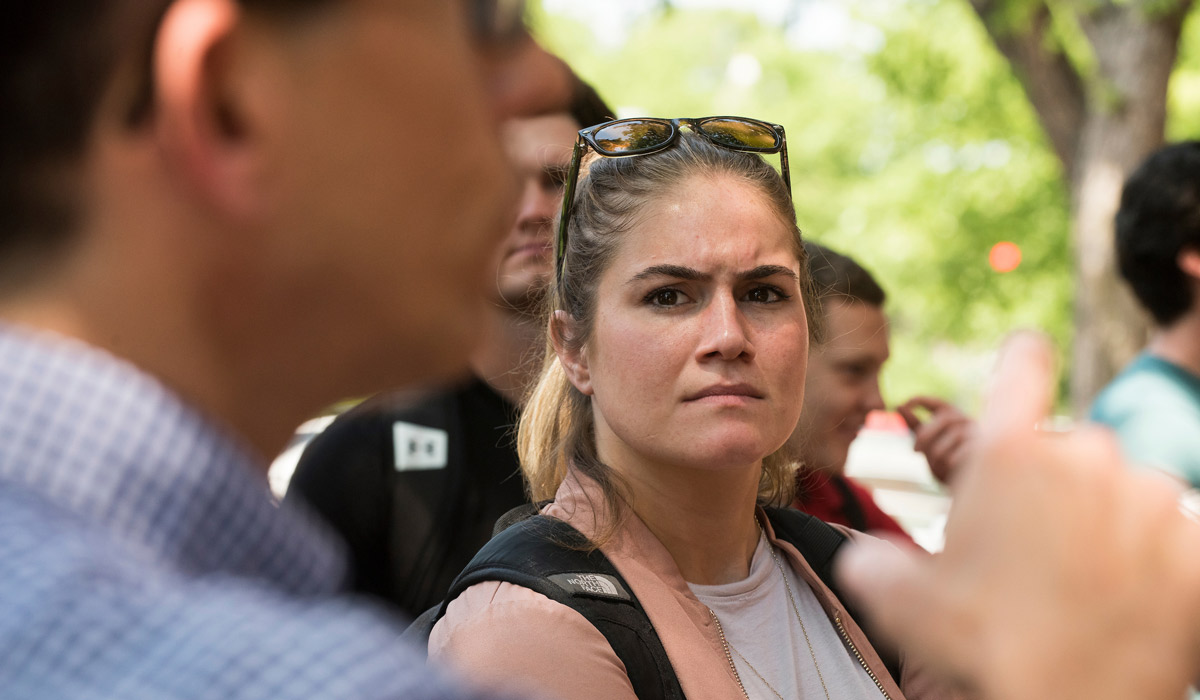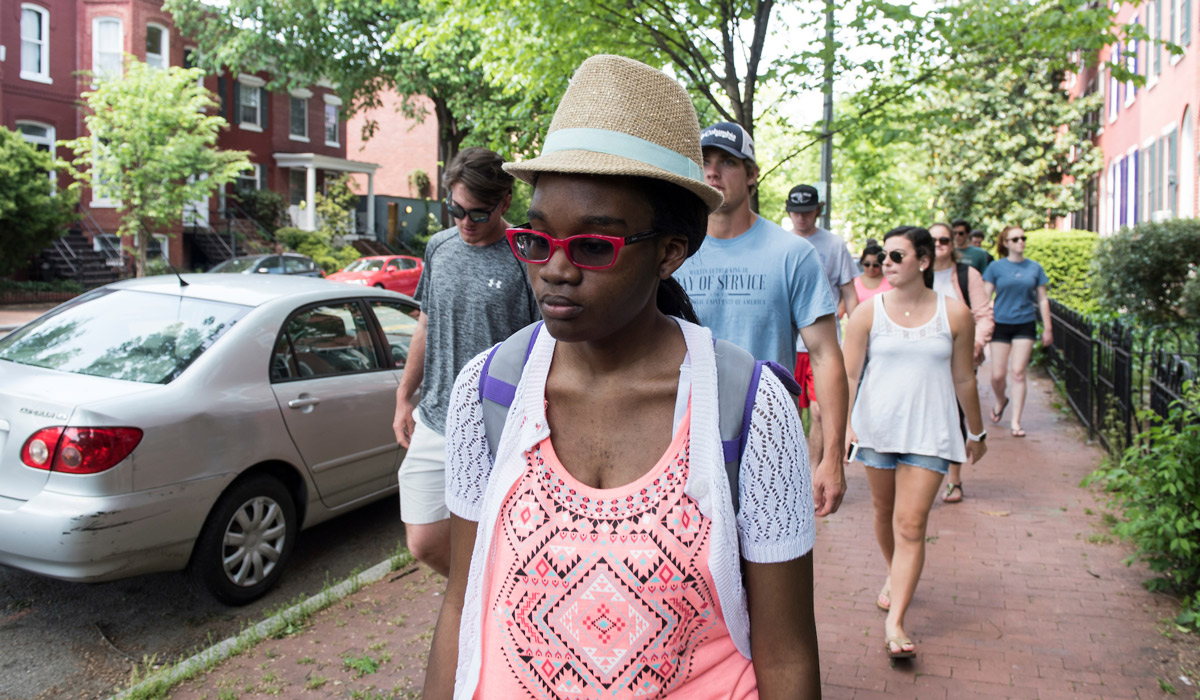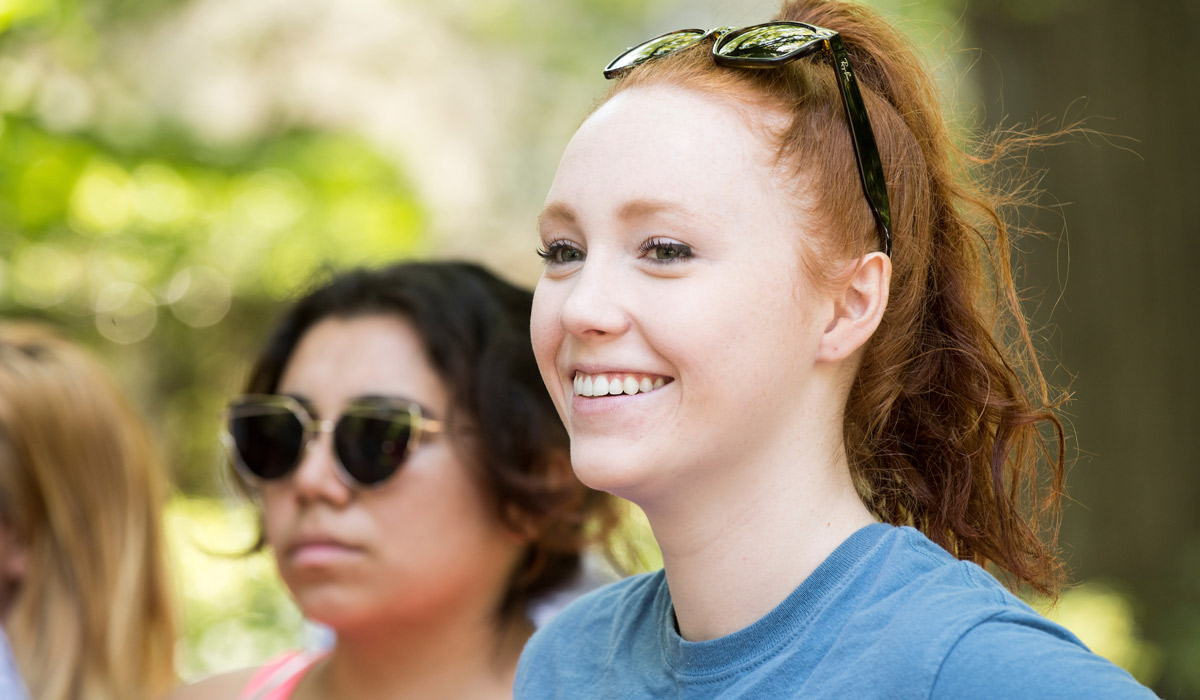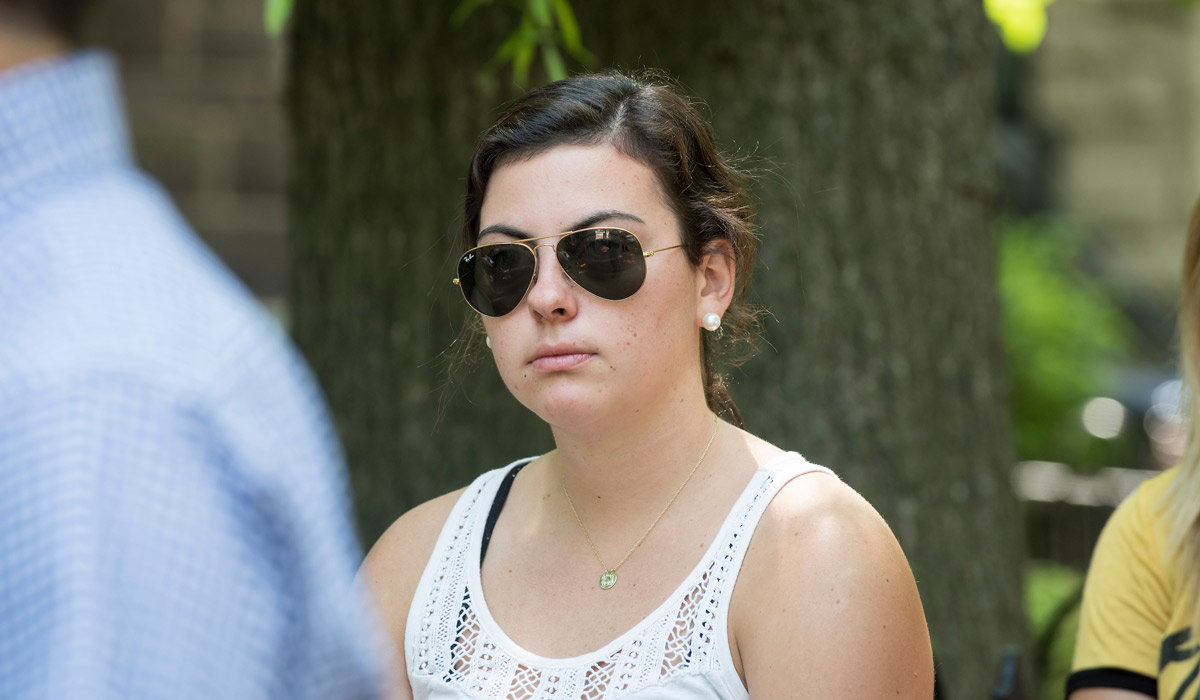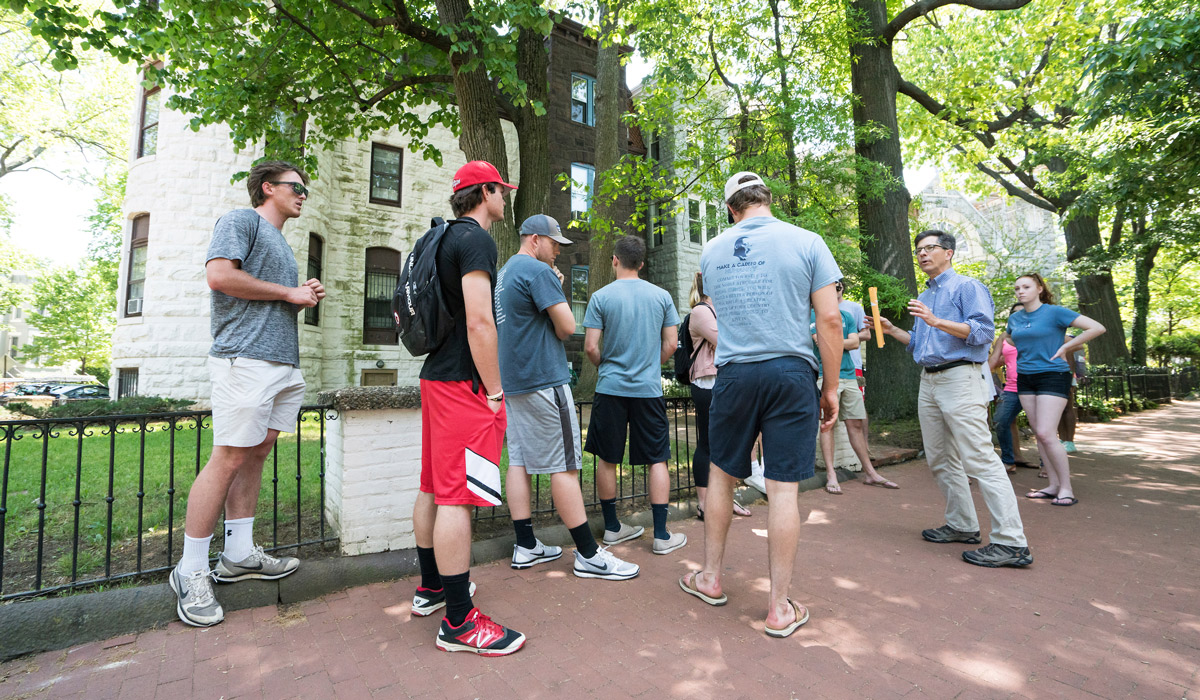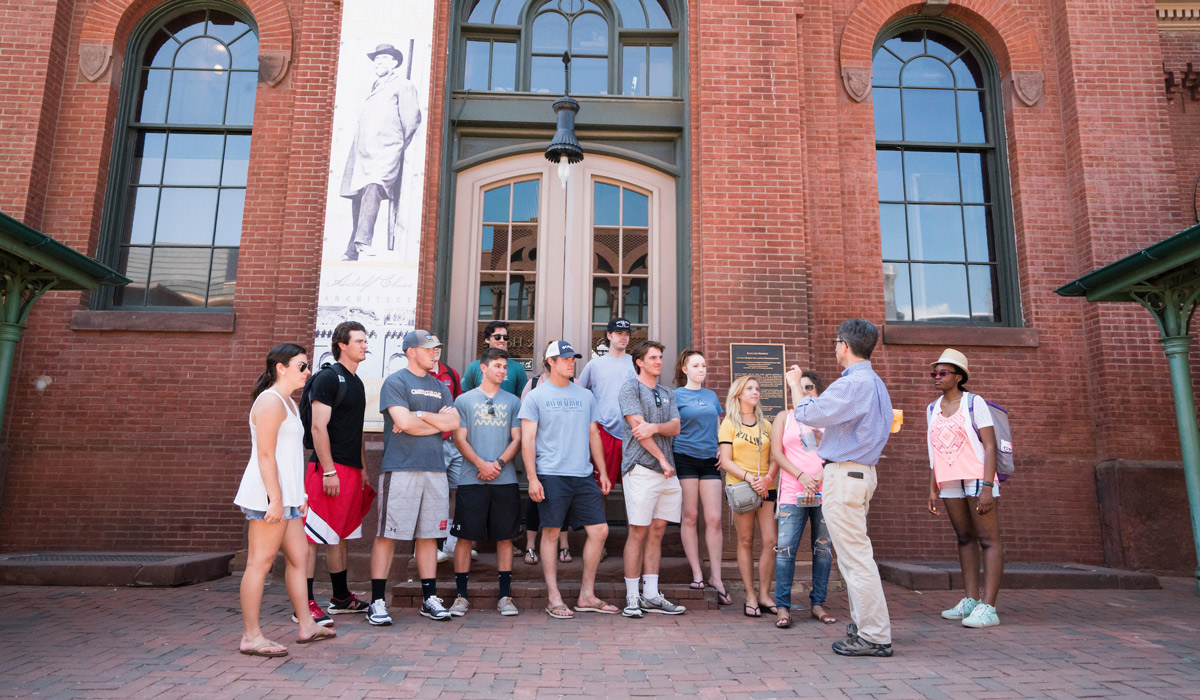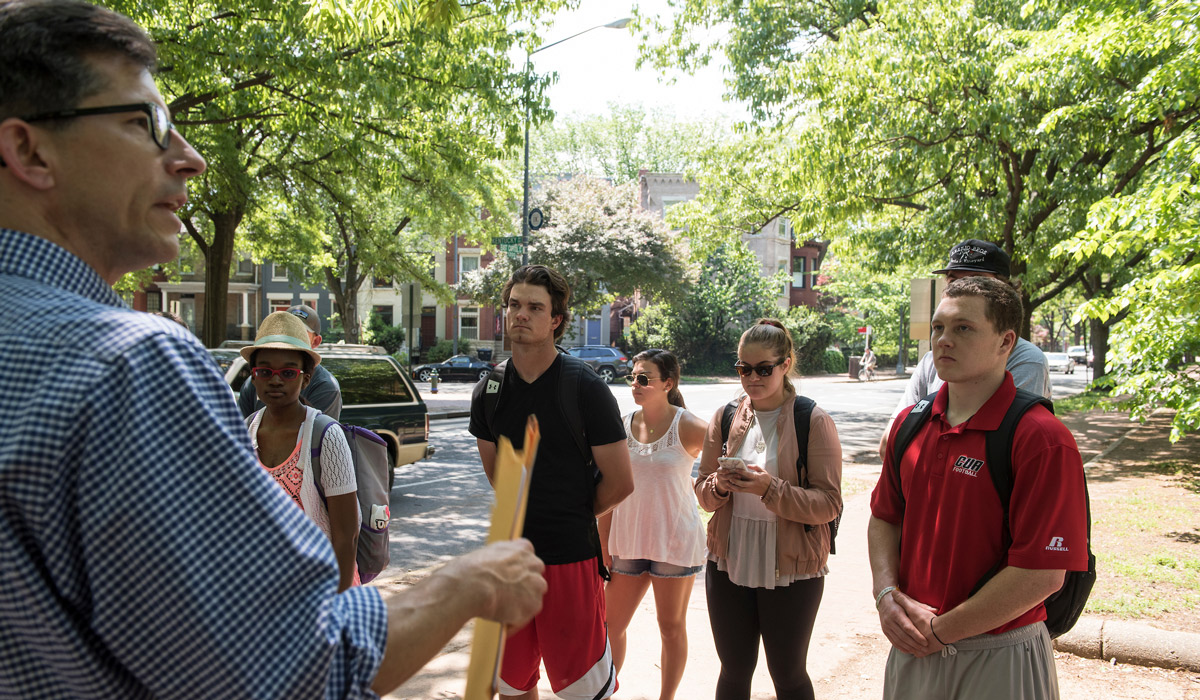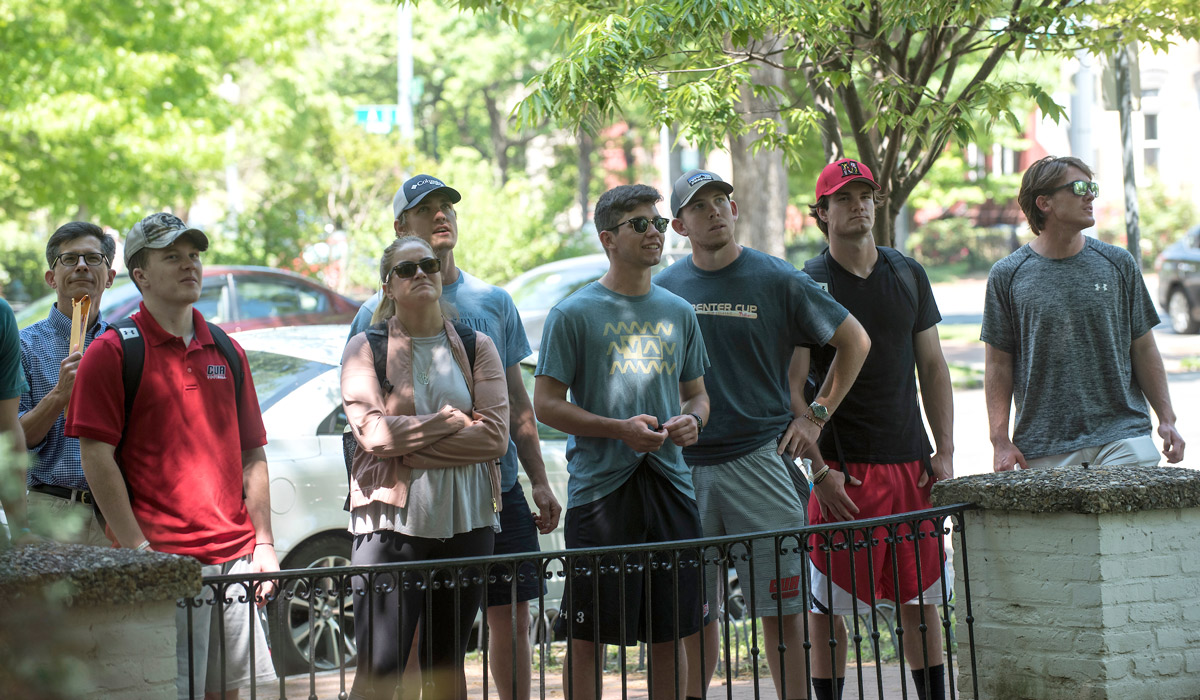
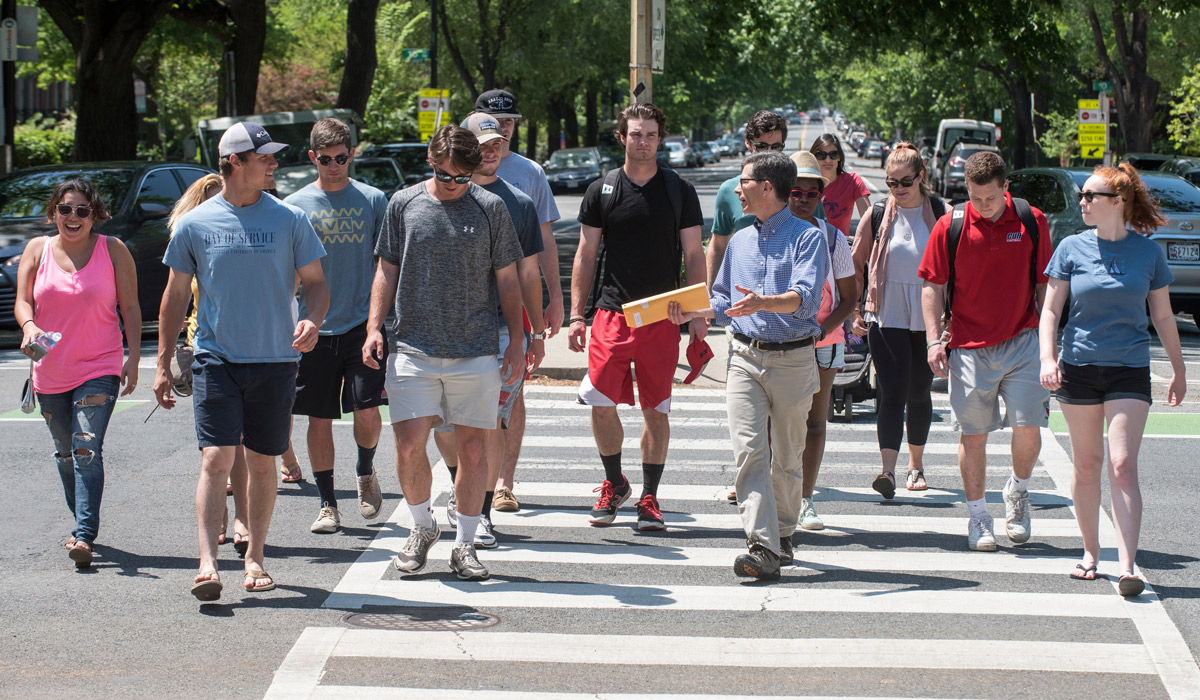
Outside the Brookland-CUA Metro Station, three professors are taking attendance as they stand amid about 60 students on a hot Friday afternoon. A few stragglers dart across John McCormack Road just in time to join their classmates as they head to the train platform.
One group is going to U Street, one to Capitol Hill, and the other to Penn Quarter.
This is Washington 101, an interdisciplinary course open to all undergraduate students. In this course, the city is a classroom.

Steve West, associate professor of history, is leading his section of the course on a tour of Capitol Hill neighborhoods, starting at Eastern Market, where the students learn that Pierre L’Enfant’s 1791 plans for the city of Washington included space for local markets. From there, they walk along streets lined with Victorian row houses on their way to Lincoln Park.
In Washington Past and Present: An Introductory Study (“Wash 101”), students spend a semester learning about their “college town” as a symbolic city (the design and meaning of its buildings, monuments, and museums), a political city (the behavior of national and local policymakers), and a living city (the city’s economy, neighborhoods, culture, and population).
The unique course was designed by a group of professors from politics (Matthew Green), history and archives (Maria Mazzenga and Timothy Meagher), social work (Laura Daughtery), and English (Taryn L. Okuma) with the support of then dean of the School of Arts and Sciences L.R. Poos in fall 2010 as a way to help freshmen learn about and become comfortable in their new city. It was offered for the first time in spring 2011. The course became so popular it is now open to students in all classes. Enrollment in Wash 101 is so large that there are three sections that meet with an individual professor during the week.
On Fridays, all three sections come together either to hear lectures from Washington insiders, many of whom are alumni, in areas such as government, museums, architecture firms, and development agencies, or to explore the National Mall, museums, the U.S. Capitol, neighborhoods, and embassies.
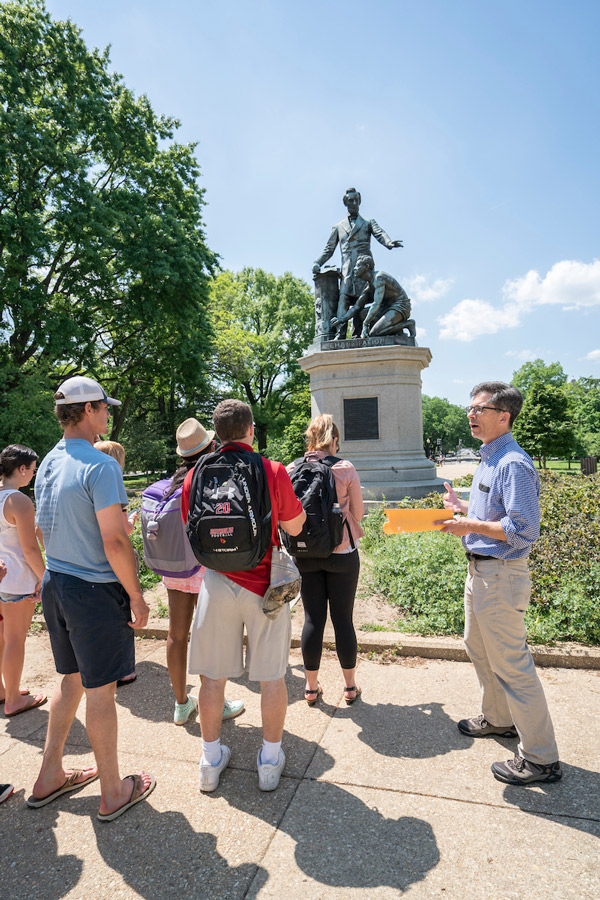
As Steve West and his students enter Lincoln Park, they head to the “other” Lincoln memorial, a statue erected to honor the 16th president. That statue was dedicated in 1876, on the 11th anniversary of Lincoln’s assassination and 46 years before the dedication of the Lincoln Memorial. The site of the park once served as a camp for Federal troops during the Civil War, says West.
West asks the students how they feel about this statue, known as the Emancipation Statue. Lincoln, holding the Emancipation Proclamation in his right hand, reaches down to a kneeling freedman with his left hand. Some students say the image of Lincoln standing over the former slave in a supreme way makes them uncomfortable. Frederick Douglass shared that feeling, says West. “But still he accepted the invitation to speak at the dedication. He was not going to pass on the opportunity to address a congregation of white dignitaries.”
“I prefer the Lincoln Memorial on the Mall,” says a student as others agree.
“They tell two different, but historically accurate, stories, don’t they?’ says West. “That’s the thing about Washington, D.C., there’s a story at every turn.”
